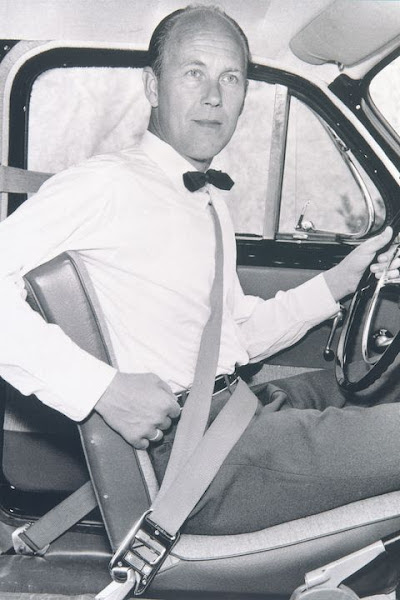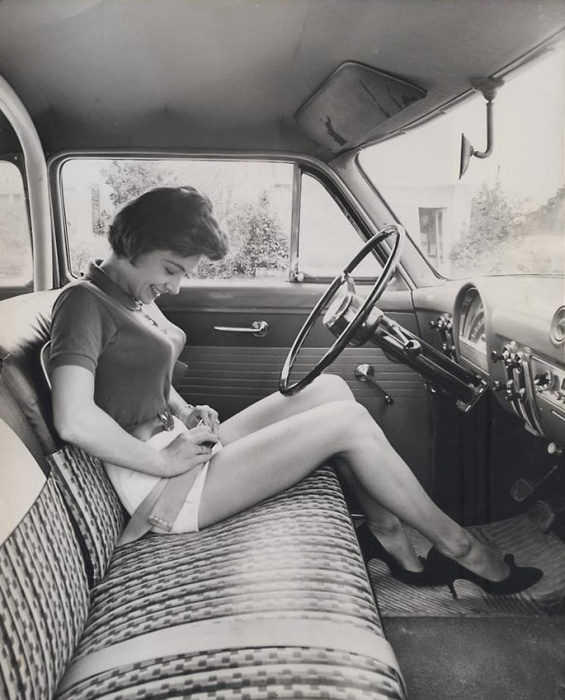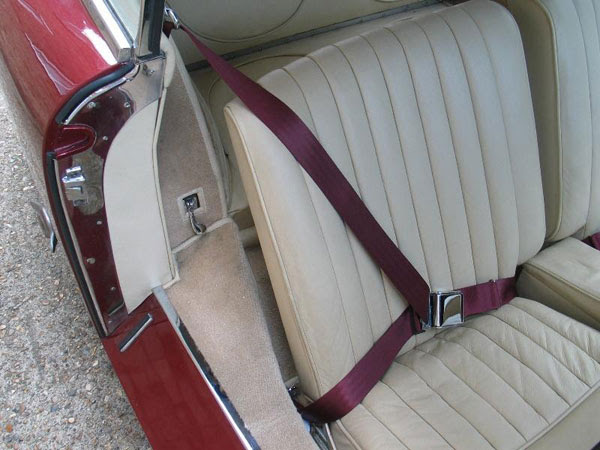Seatbelts save lives! We all know this now, but seatbelts were not a standard inclusion when automobiles were first introduced and manufactured. These safety devices have come a long way since they were invented, with small innovations and improvements throughout their history, increasing the protection they provide.

Buckle-up and hold on tight as we look at how seatbelts were invented and how they became regulated!
Seatbelt History
 Seatbelts were originally designed and invented for use in air transportation, not on the ground! George Cayley, an English engineer, is credited with developing the first seatbelt that was used in air gliders in the mid-19th century. These seatbelts were rudimentary and not much more than fabric tied together across the aviator’s lap while flying, but lead the way for seatbelts to grow into what we know today.
Seatbelts were originally designed and invented for use in air transportation, not on the ground! George Cayley, an English engineer, is credited with developing the first seatbelt that was used in air gliders in the mid-19th century. These seatbelts were rudimentary and not much more than fabric tied together across the aviator’s lap while flying, but lead the way for seatbelts to grow into what we know today.
Seatbelts common in automobiles in the 1930’s were all two-point lap belts, and not all vehicles were equipped with them well into the 1950’s and 1960’s. Drivers and their passengers paid little attention to these safety devices if their vehicles were equipped with them, not necessarily realizing how much safer they made any on-road journey.
One of the first, and most important, innovations in seatbelt history sits with Volvo and one of their safety designers, Nils Bohlin. This is the man attributed with the invention of the three-point seatbelt that outfits passenger vehicles today and was even inducted into the National Inventors Hall of Fame in 2002. The three-point seatbelt that he invented extended the use of seatbelts from merely holding you in place to increasing your safety and security. Volvo decided to share the patent for their invention across all car manufacturers, making a step in the right direction for overall vehicle safety.
Car manufacturers were slow to “click” with seatbelts as a standard feature. Nash Motors Company was the first American car manufacturer to offer seatbelts on their 1949 models, and installed them in 40,000 cars. After one year, however, only 1,000 had been used by customers and the other cars purchased saw seatbelt removal requests from their drivers. Ford offered seatbelts as an option a few years later, in 1955, but only a fraction of buyers opted to pay extra for them. The 1959 Volvo Amazon was among the first vehicles to have seatbelts as a standard feature.

C. Hunter Shelden, a neurologist in California, made one of the first major contributions to the automobile industry with the idea of retractable seatbelts, along with proposals of other safety features, including air bags and roll bars. Retractable seatbelts were the original base for the “locking retractors” that seatbelts have in modern vehicles. Locking retractors have been required since 1996, and these force the seatbelts to lock pre-collision. Seatbelts can be extended slowly and gradually, allowing the occupant to fasten themselves and move around freely but if there is a sudden and rapid pull of tension - like when there is sudden braking or a collision - the seatbelt will lock in place and keep the occupant secured.
While car manufacturers were slow to adopt the seatbelt as a standard safety feature, drivers were even slower to get on board.
Regulation History

Drivers and passengers were hesitant to use seatbelts, even after they became a standard feature in many vehicles, because of the myths and misinformation that circulated about whether they made vehicles safer or more dangerous. Seatbelt regulation was slow to start, one jurisdiction at a time, but spread like wildfire once it got rolling. Wisconsin was the first US state to have a law requiring that all vehicles have seatbelts, in 1961, and the National Traffic and Motor Vehicle Safety Act was passed a few years later in 1966, requiring all US vehicle manufacturers to comply with certain safety standards - including having seatbelts for all occupants. Two years later, similar legislation for vehicle manufacturers in the United Kingdom came into effect.

Australia was the first country to implement a law, in 1970, that made wearing a seatbelt for all vehicle occupants compulsory. Canada followed closely, in 1976 and the UK implemented their seatbelt laws in 1983. The United States was one of the last first-world countries to implement seatbelt laws, pushing forth legislation for drivers and passengers state-by-state as opposed to federally like Canada. The first state to see seatbelt laws come to fruition was New York in 1984 and throughout the next eight years, the laws would spread country-wide with the exception of New Hampshire which, to this day, does not have seatbelt occupancy laws.
–
Seemingly simple, the seatbelt can be seen as nothing more than some fabric strips that keep us safe while driving. However the innovation behind these life-saving devices is beyond impressive! Seatbelts save roughly 15,000 lives every year and these days, almost 90% of vehicle users - drivers and passengers - buckle up every time they hit the road.
